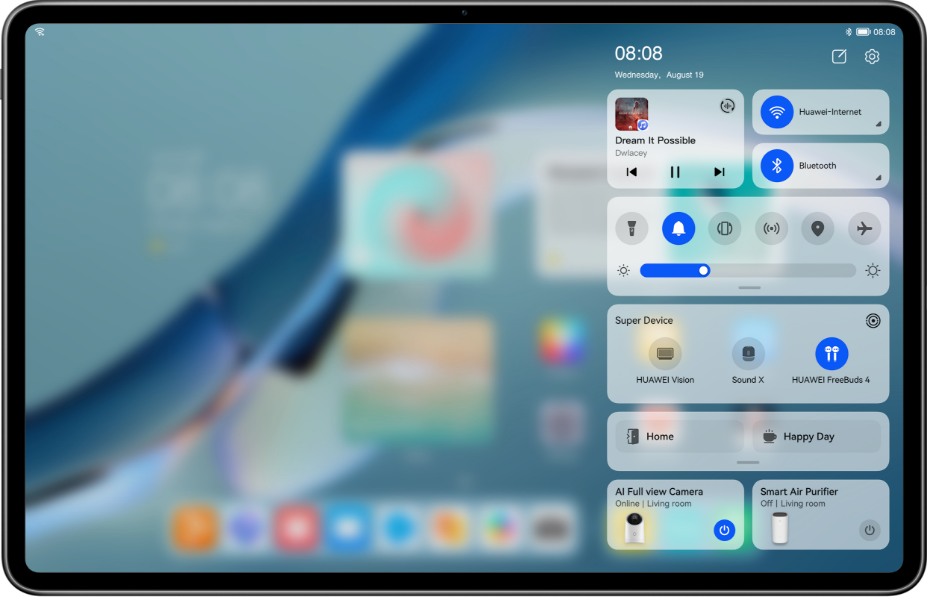
Huawei has officially launched HarmonyOS Next, its self-developed operating system designed to compete with Android. This new OS marks a pivotal step for Huawei, as it is built completely independent of Android and the Linux kernel. In this article, we’ll explore the key features of HarmonyOS Next, focusing on its software modules, seamless device connectivity, advanced security features, and AI-driven innovations. Let’s dive deep into how these modules are enhancing device performance and why Huawei’s HarmonyOS Next is a game-changer for its ecosystem.
What Are Software Modules in HarmonyOS Next?
Software modules are the backbone of HarmonyOS Next’s architecture, allowing Huawei to offer enhanced performance, energy efficiency, and seamless communication between devices. By leveraging a self-developed microkernel, these software modules enable HarmonyOS Next to support multiple device form factors, including smartphones, tablets, wearables, and smart home systems.
This modular approach is critical for Huawei’s aim to create a unified experience across its ecosystem. Each software module is responsible for specific tasks, such as handling AI computations, managing system resources, or facilitating device interconnectivity through Huawei’s Share 2.0 feature. This separation of responsibilities ensures that HarmonyOS Next remains optimized, secure, and capable of delivering a smooth user experience across devices.
Huawei Share 2.0: Seamless Connectivity
One of the most impressive features of HarmonyOS Next is Huawei Share 2.0, a file-sharing module that promises lightning-fast data transfers between devices. Huawei claims that a 1.2GB file can be transferred in just 8 seconds between two HarmonyOS Next devices. This is possible due to optimized communication protocols between the software modules managing inter-device connectivity.
The ability to quickly and securely transfer files is crucial in a world where’ consumers and professionals frequently work across multiple devices. Huawei Share 2.0 achieves this by minimizing the latency and overhead typically associated with cross-device communication, allowing for seamless integration between smartphones, tablets, and other connected devices.
Star Shield Security Architecture
Security has always been a priority for Huawei, and with HarmonyOS Next, the company introduces the Star Shield architecture, a system-level protection module that ensures comprehensive device security. This security framework is deeply integrated into the operating system, providing encryption and secure data transfer for all forms of communication between devices.
Star Shield is particularly effective due to its modular nature, as each software module benefits from enhanced security protocols. This means that any interaction between devices, such as file sharing or device synchronization, is safeguarded against potential vulnerabilities. The result is a more secure ecosystem, giving users peace of mind when using HarmonyOS Next-powered devices.
Performance Enhancements with Modular Architecture
One of the standout claims made by Huawei is that HarmonyOS Next offers a 30% increase in device fluency and a 20% reduction in power consumption compared to previous versions. These improvements are a direct result of the system’s modular architecture, which allows for better resource management and more efficient communication between software modules.
For example, rather than having a single, monolithic system handle all tasks, HarmonyOS Next delegates responsibilities to individual software modules, reducing the load on system resources. This modular approach also supports faster app launch speeds, smoother UI transitions, and improved multitasking, all while consuming less power.
AI Integration Powered by the Pangu Model
HarmonyOS Next integrates AI capabilities powered by the Pangu large language model, delivering an intuitive and intelligent user experience. The system-level AI is deeply embedded in the software modules, allowing for advanced features such as personalized recommendations, predictive text, and intelligent device management.
Because HarmonyOS Next separates AI tasks into dedicated software modules, the OS can process complex AI-driven functions without compromising overall system performance. This modular approach ensures that AI interactions remain fast and responsive, making HarmonyOS Next a highly intuitive operating system.
Global Rollout and Future Prospects
Although HarmonyOS Next is currently available in a public beta version for Chinese users, Huawei has confirmed plans for a global release. The initial device lineup includes the Pura 70 series, Huawei Pocket 2, and MatePad Pro 11 (2024), with more devices expected to be added in the future.
With over 1 billion devices globally running previous versions of HarmonyOS, Huawei is poised to expand its ecosystem further. By offering a modular architecture that enhances device connectivity, security, and performance, HarmonyOS Next positions itself as a viable alter-native to Android, with the potential to attract a growing user base across the world.





